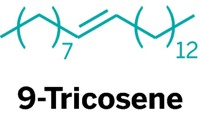Advertisement
Grab your lab coat. Let's get started
Welcome!
Welcome!
Create an account below to get 6 C&EN articles per month, receive newsletters and more - all free.
It seems this is your first time logging in online. Please enter the following information to continue.
As an ACS member you automatically get access to this site. All we need is few more details to create your reading experience.
Not you? Sign in with a different account.
Not you? Sign in with a different account.
ERROR 1
ERROR 1
ERROR 2
ERROR 2
ERROR 2
ERROR 2
ERROR 2
Password and Confirm password must match.
If you have an ACS member number, please enter it here so we can link this account to your membership. (optional)
ERROR 2
ACS values your privacy. By submitting your information, you are gaining access to C&EN and subscribing to our weekly newsletter. We use the information you provide to make your reading experience better, and we will never sell your data to third party members.
Environment
Worker Bees’ Chemical Castration
Biochemistry: Compound in food fed to worker bee larvae interferes with ovary development
by Sarah Everts
August 31, 2015
| A version of this story appeared in
Volume 93, Issue 34
Female honeybee larvae have two possible fates. Larvae raised as potential queens are nourished with royal jelly, a dish containing the protein royalactin. Female larvae destined to become worker bees receive royal jelly for just three days: Then their diet switches to honey and beebread, a fermented pollen product produced by bees. A team of researchers led by May R. Berenbaum of the University of Illinois, Urbana-Champaign, wondered how these differences in diet lead queen bees to be fertile but leave worker bees incapable of reproducing. The team wanted to determine whether worker infertility is due to a nutritional deprivation or whether something in the workers’ food chemically castrates the larvae. Their study supports the latter explanation. The team reports that p-coumaric acid may act as a chemical castrator by altering the expression of genes required for ovary development (Sci. Adv. 2015, DOI: 10.1126/sciadv.1500795). The compound is common in pollen, a major constituent of the worker bee diet, but it is not found in queen bees’ royal jelly. When the scientists added p-coumaric acid to royal jelly, the would-be queen bees developed smaller ovaries.



Join the conversation
Contact the reporter
Submit a Letter to the Editor for publication
Engage with us on Twitter